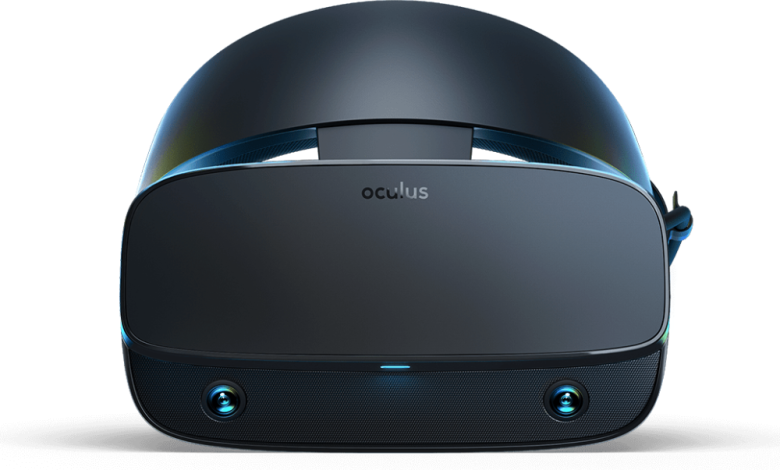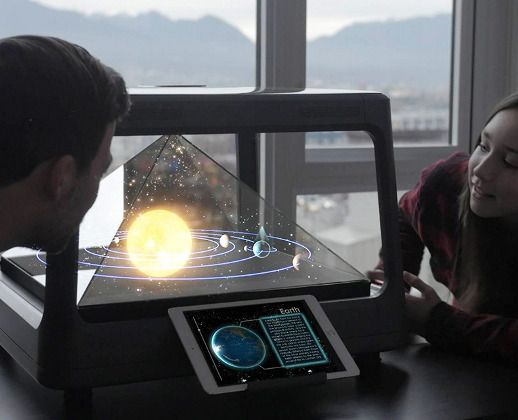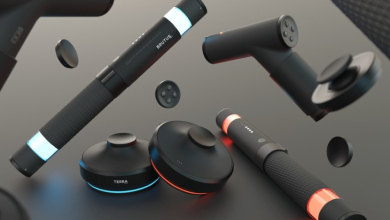Revolutionary Gadgets Redefine Entertainment Experiences

In today’s fast-paced digital era, groundbreaking technology is transforming every facet of our lives, and the realm of entertainment is no exception. Revolutionary gadgets are redefining how audiences consume content, interact with media, and engage with digital experiences. As technological innovations surge forward, the traditional boundaries between passive viewing and immersive interaction are blurring. This article delves into the transformative impact of modern gadgets on the entertainment industry, exploring emerging trends, technological breakthroughs, and the future outlook of immersive entertainment. From virtual reality headsets to smart interactive devices, we will examine how these innovations are reshaping entertainment experiences worldwide.
The Evolution of Entertainment Gadgets
The history of entertainment technology is marked by continuous evolution—from the invention of the radio and television to the modern age of streaming and interactive gaming. Early gadgets laid the foundation for what would become a multi-billion-dollar industry, continuously pushing the limits of what was possible. Today, revolutionary gadgets are not just tools for entertainment; they are gateways to entirely new worlds, blending technology, art, and human interaction.
Historically, entertainment gadgets were primarily designed to provide a passive viewing experience. The advent of color television, for instance, revolutionized family living rooms by transforming black-and-white broadcasts into vivid displays. However, as digital technology advanced, the focus shifted toward interactivity, leading to the development of personal computers, gaming consoles, and, eventually, devices capable of delivering immersive experiences.
The evolution from passive to interactive entertainment has been accelerated by innovations in processing power, connectivity, and miniaturization. Modern gadgets are now equipped with advanced features such as artificial intelligence (AI), high-resolution displays, and real-time data processing, which empower users to not only consume but also create and share content seamlessly.
Key Revolutionary Gadgets Shaping Entertainment
The contemporary entertainment landscape is being redefined by an array of cutting-edge gadgets that enhance user interaction and elevate the overall experience. The following sections highlight some of the most influential categories of gadgets that are driving this revolution.
A. Virtual Reality (VR) Headsets
Virtual reality headsets have become synonymous with immersive entertainment. By simulating a three-dimensional environment, VR headsets allow users to step into a virtual world where the boundaries of reality are reimagined.
- Enhanced Immersion: VR headsets create a sense of presence by enveloping users in a fully immersive environment. High-resolution displays and surround sound amplify the experience, making users feel as if they are truly inside the digital realm.
- Interactive Experiences: Gamers and content creators alike are utilizing VR to craft interactive narratives where user decisions influence outcomes. This dynamic interaction fosters deeper engagement and a more personalized experience.
- Expanding Applications: Beyond gaming, VR is making significant inroads into areas such as virtual tourism, education, and live event streaming, offering users a rich, multisensory experience.
B. Augmented Reality (AR) Devices
While VR completely immerses users in a virtual environment, augmented reality devices overlay digital information onto the physical world. AR technology is rapidly gaining traction due to its versatility and real-world applications.
- Seamless Integration: AR devices, including smart glasses and mobile applications, blend digital elements with the user’s real environment. This fusion enhances everyday experiences, from interactive gaming to dynamic navigation.
- Practical Uses: In entertainment, AR is transforming live events by adding interactive visual elements. Concerts, sports events, and exhibitions are leveraging AR to provide enhanced visual storytelling.
- User Engagement: By integrating digital content into the physical space, AR encourages users to interact with their surroundings in innovative ways, bridging the gap between virtual and real.
C. Smart TVs and Streaming Devices
Smart TVs and streaming devices are revolutionizing the way we access and interact with visual media. These gadgets provide on-demand content and personalized viewing experiences, reshaping traditional broadcast and cable television models.
- On-Demand Entertainment: With smart TVs, users have instant access to a vast library of content through streaming services. This shift from scheduled programming to on-demand viewing has fundamentally altered consumer behavior.
- Interactive Features: Modern smart TVs come equipped with voice recognition, AI-powered recommendations, and integrated social media features, making the viewing experience more engaging and tailored to individual preferences.
- Connectivity and Integration: Streaming devices integrate with home networks and other smart devices, creating a connected ecosystem that enhances the overall entertainment experience.
D. Next-Generation Gaming Consoles
Gaming consoles have evolved far beyond their early beginnings as simple video game machines. Today’s next-generation consoles are powerful entertainment hubs that offer immersive gaming experiences alongside a wide array of multimedia functionalities.
- High-Fidelity Graphics: Advanced processing capabilities enable consoles to deliver stunning, lifelike graphics that elevate gaming experiences to cinematic levels.
- Multifunctionality: Modern consoles are no longer limited to gaming. They serve as media centers for streaming movies, music, and even social media, offering a comprehensive entertainment solution.
- Online Connectivity: With robust online services, gaming consoles facilitate multiplayer experiences, cloud gaming, and digital downloads, fostering a vibrant global gaming community.
E. Wearable Technology
Wearable devices have carved out a unique niche in the entertainment ecosystem. Originally designed for health and fitness tracking, wearables now offer interactive entertainment features that extend beyond their primary function.
- Interactive Experiences: Wearables such as smartwatches and fitness bands can now connect to various entertainment platforms, providing notifications, controlling media playback, and even interacting with other smart devices.
- Augmented Engagement: In the realm of sports and live events, wearables provide real-time statistics and interactive content, enhancing the spectator experience and allowing for more personalized engagement.
- Future Possibilities: As technology advances, wearable devices are poised to offer even more immersive features, potentially integrating with VR and AR technologies for a truly interconnected experience.
F. Home Automation and IoT Devices
The Internet of Things (IoT) has led to the emergence of smart home devices that not only make life more convenient but also contribute to the overall entertainment experience. From smart speakers to connected lighting systems, these gadgets play a crucial role in creating an immersive digital environment.
- Integrated Ecosystems: IoT devices connect seamlessly with entertainment systems to create a synchronized home experience. Voice-controlled assistants can adjust lighting, sound, and temperature to match the mood of a movie or game.
- Enhanced User Experience: Smart home devices offer automation and personalization, allowing users to control their entertainment environment effortlessly. For example, a smart speaker can recommend movies or play a curated playlist based on user preferences.
- Future Integration: As IoT technology evolves, the integration of home automation with entertainment gadgets is expected to deepen, offering even more intuitive and immersive experiences.
Impact on User Experience
Revolutionary gadgets are not merely about technological novelty—they fundamentally enhance user experience by transforming how content is delivered, consumed, and interacted with. The following aspects highlight the profound impact these devices have on modern entertainment.
A. Immersive Interactivity
Modern gadgets enable a level of interactivity that was once the domain of science fiction. Whether through VR headsets that transport users to alternate worlds or AR devices that overlay digital information on the real environment, these tools create experiences that are both immersive and interactive. This heightened interactivity translates to deeper engagement, as users are no longer passive consumers but active participants in their entertainment.
B. Personalized Experiences
One of the most significant trends in entertainment today is the move toward personalization. Revolutionary gadgets leverage data analytics, machine learning, and AI to tailor experiences to individual users. Smart TVs, for instance, use sophisticated algorithms to recommend content based on viewing habits, while wearable devices can offer customized fitness and entertainment recommendations. This level of personalization ensures that every user receives content that is most relevant to their interests and preferences.
C. Seamless Integration and Connectivity
The integration of various entertainment gadgets into a cohesive ecosystem has transformed the way users interact with digital content. Devices are now interconnected, allowing for seamless transitions between different forms of media. For example, a user might start watching a movie on a smart TV, continue the experience on a tablet while on the move, and later resume on a VR headset. This fluid connectivity not only enhances convenience but also ensures a consistent and enriched user experience.
D. Enhanced Visual and Audio Quality
Advancements in display technology and audio engineering have significantly elevated the quality of entertainment. Modern gadgets come equipped with high-definition displays, 4K resolution, and immersive surround sound systems, delivering an audiovisual experience that is both stunning and realistic. Whether it’s the crisp visuals of a gaming console or the dynamic soundscapes of a home theater system, the quality of media consumption has reached unprecedented levels.
The Integration of AI and IoT in Entertainment Devices
The infusion of artificial intelligence (AI) and the Internet of Things (IoT) into entertainment gadgets is driving a paradigm shift in user experiences. These technologies work in tandem to offer smarter, more responsive, and highly interactive entertainment solutions.
A. AI-Driven Personalization
AI algorithms analyze vast amounts of data to understand user behavior, preferences, and viewing habits. This data-driven approach enables devices to offer personalized content recommendations, dynamic user interfaces, and adaptive functionalities that respond to individual needs. Some key applications of AI in entertainment include:
- Content Curation: AI-driven platforms can curate personalized playlists, suggest movies, and recommend games based on user history.
- Voice Recognition: AI-powered voice assistants enable hands-free control of entertainment systems, enhancing usability and accessibility.
- Predictive Analytics: By anticipating user preferences, AI can streamline the content discovery process, reducing the time spent searching for desired media.
B. IoT and Smart Connectivity
IoT technology facilitates the creation of a connected ecosystem where various devices communicate and operate in harmony. In the context of entertainment, IoT enables smart home devices, wearable technology, and multimedia systems to work together seamlessly. This integration leads to:
- Automated Adjustments: For instance, smart lighting can adjust automatically based on the genre of the movie being watched, while sound systems adapt to ambient room conditions.
- Interconnected Control: Users can manage multiple devices through a single interface, such as a smartphone app or voice-activated assistant, ensuring that every component of their entertainment system is perfectly synchronized.
- Enhanced Data Collection: IoT devices collect real-time data on usage patterns, which can be leveraged to further refine content recommendations and improve device performance.
C. Future Innovations in AI and IoT
As AI and IoT technologies continue to evolve, we can expect even more sophisticated features in entertainment gadgets. Future innovations may include:
A. Adaptive Interfaces: User interfaces that evolve based on user interactions and preferences.
B. Seamless Cross-Device Experiences: Further integration between personal devices and home entertainment systems, offering uninterrupted media experiences.
C. Advanced Security Measures: With increased connectivity comes a heightened need for security; AI-driven security protocols will ensure that user data remains safe in an interconnected ecosystem.
Market Trends and Future Outlook
The market for revolutionary entertainment gadgets is booming, fueled by continuous technological advancements and a growing demand for immersive experiences. Analysts predict that the global entertainment technology market will continue its upward trajectory, driven by several key trends.
A. Increasing Consumer Demand
Consumer expectations are higher than ever before. As users become more tech-savvy and accustomed to high-quality digital experiences, the demand for advanced gadgets continues to rise. This increased demand is evident in the rapid adoption of VR headsets, smart TVs, and interactive gaming consoles.
B. Investment in Research and Development
Major technology companies are investing heavily in research and development to stay ahead of the curve. These investments are not only leading to incremental improvements but also groundbreaking innovations that redefine entertainment experiences. The commitment to R&D is ensuring that the industry remains dynamic, continuously pushing the envelope of what is possible.
C. Convergence of Entertainment and Technology
The line between technology and entertainment is becoming increasingly blurred. Gadgets are no longer confined to one function; they serve as multifunctional platforms that integrate various forms of media, communication, and connectivity. This convergence is opening up new opportunities for content creators, advertisers, and consumers alike.
D. Global Expansion and Market Penetration
Emerging markets are playing a significant role in the expansion of the entertainment technology sector. As access to high-speed internet and advanced devices spreads globally, the potential for market penetration grows exponentially. Companies are tailoring their products to meet the needs of diverse consumer bases, driving global adoption of revolutionary gadgets.
Challenges and Considerations
While the future of entertainment technology is promising, several challenges must be addressed to fully harness the potential of revolutionary gadgets.
A. Cost and Accessibility
Advanced gadgets often come with a high price tag, which can be a barrier for many consumers. Ensuring that these technologies become more accessible without compromising on quality is a critical challenge for manufacturers and industry stakeholders.
B. Data Privacy and Security
With increased connectivity and personalization, the collection and utilization of personal data have raised significant concerns about privacy and security. Robust security measures and transparent data policies are essential to maintain user trust in a digitally connected entertainment ecosystem.
C. Technological Overload
As the number of available devices grows, so does the complexity of managing them. Consumers may face challenges with interoperability and technology overload, which can lead to a fragmented user experience. Streamlining integration and ensuring seamless connectivity across devices remain top priorities.
D. Digital Divide
Despite rapid advancements, a significant portion of the global population still lacks access to the latest technology. Bridging the digital divide is crucial to ensure that the benefits of revolutionary gadgets are enjoyed by a wider audience, irrespective of geographical and economic disparities.
Best Practices for Adopting Revolutionary Gadgets
For both consumers and businesses looking to leverage the benefits of advanced entertainment technology, following best practices can maximize efficiency and user satisfaction. Here are some guidelines to consider:
A. Conduct Thorough Research
Before investing in new gadgets, it is essential to conduct comprehensive research. Evaluate product reviews, compare specifications, and consider long-term benefits.
B. Prioritize Integration
Choose gadgets that integrate seamlessly with existing systems. This integration ensures that devices work in harmony, providing a unified entertainment experience.
C. Embrace Scalability
Invest in technology that is not only advanced but also scalable. As new features emerge, ensure that your gadgets can adapt and grow with evolving technological trends.
D. Focus on Security
Ensure that all devices come with robust security features. Regularly update software, use strong passwords, and enable multi-factor authentication to protect personal data.
E. Leverage Expert Advice
For businesses, consulting with technology experts or digital transformation specialists can provide insights into the most effective ways to adopt and integrate new gadgets into existing workflows.
Case Studies and Success Stories
Examining real-world examples of how revolutionary gadgets have transformed entertainment experiences can offer valuable insights into their practical applications.
A. Immersive VR Experiences in Gaming
A leading gaming company recently launched a new VR platform that has redefined the immersive gaming experience. By integrating high-resolution displays with intuitive controls, the platform allows players to step into vast digital worlds. User engagement increased by over 40%, highlighting the transformative impact of VR on interactive entertainment.
B. Smart Home Theaters
A prominent electronics manufacturer has developed a state-of-the-art smart home theater system that integrates advanced sound systems, smart lighting, and interactive displays. This comprehensive setup allows users to customize their viewing environment, creating an immersive cinematic experience in the comfort of their homes.
C. Augmented Reality in Live Events
Several global music festivals have integrated AR devices to enhance live performances. Attendees can use AR glasses to view additional visual content during concerts, enriching the overall experience and creating a lasting impact on audience engagement.
The Role of Innovation in Shaping Future Entertainment
Innovation remains the driving force behind the continuous evolution of entertainment technology. Companies are investing in new research and development initiatives to create gadgets that push the boundaries of creativity and interactivity. These innovations are not only enhancing entertainment experiences but also opening up new revenue streams and business models for content creators and technology providers.
A. Cross-Industry Collaboration
Successful innovation often results from collaborations between technology companies, content creators, and industry experts. By pooling resources and expertise, these partnerships can accelerate the development of groundbreaking gadgets and deliver experiences that were once considered impossible.
B. Continuous User Feedback
Incorporating user feedback into product development is essential for creating gadgets that meet real-world needs. Manufacturers are increasingly adopting agile methodologies, allowing them to iterate on designs quickly and incorporate user insights into new versions of their products.
C. Sustainability and Eco-Friendly Innovations
As the global focus shifts toward sustainability, innovative companies are developing eco-friendly gadgets that minimize environmental impact. Sustainable materials, energy-efficient designs, and green manufacturing processes are becoming important factors in the development of next-generation entertainment devices.
Conclusion
Revolutionary gadgets are redefining the landscape of entertainment by providing immersive, interactive, and personalized experiences. From VR headsets and AR devices to smart TVs and advanced gaming consoles, these innovations are not just changing how content is consumed—they are transforming the very nature of entertainment itself. As technology continues to evolve, so too will the ways in which we engage with media, making the future of digital entertainment both exciting and unpredictable.
For consumers, embracing these revolutionary gadgets means stepping into a world where entertainment is more dynamic and engaging than ever before. For businesses, the challenge lies in adapting to these rapid changes and leveraging technology to create experiences that captivate audiences while driving growth and profitability.
The integration of AI, IoT, and sustainable innovation will further accelerate this transformation, ensuring that entertainment remains at the forefront of technological progress. As we look to the future, one thing is clear: the revolution in entertainment is just beginning, and those who adapt and innovate will be best positioned to reap its rewards.





